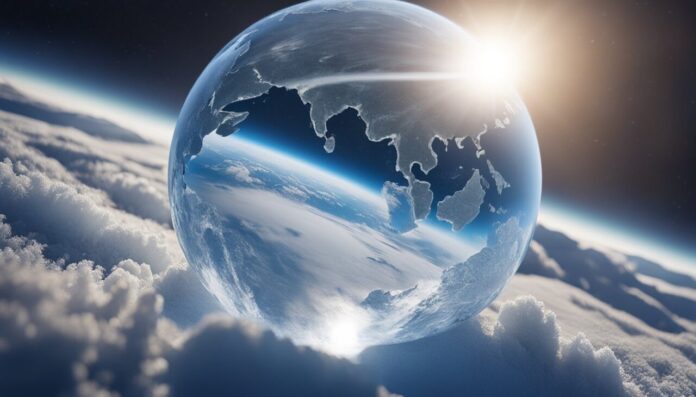
If the sun were to suddenly disappear, life on Earth would be drastically affected. The sun is the center of our solar system, and its gravitational pull keeps the planets in orbit.
Without the sun’s gravity, the planets would fly off into space, leaving the solar system without its star.
Additionally, the sun provides the Earth with light and heat, which are essential for life as we know it.
Plants use the sun’s energy to undergo photosynthesis, which produces oxygen and food for other organisms. Without the sun, the Earth would quickly become a frozen, lifeless planet.
Interesting fact: The sun accounts for over 99,86% of the mass in our solar system.
Okay, so with that brief introduction let’s dive deeper starting with a short timeline explaining consequences from 1 minute to 1 billion years, and then we’ll describe each of the consequences in more detail.
Sun Disappeared – Timeline

The timeline below outlines what would happen in the minutes, hours, days, weeks, months, and years after the sun’s disappearance.
| Time Interval | Effect | Details |
| 1 minute | Nothing | Negligible drop in temperature as Earth’s surface retains heat for a short period. No significant effects on life. |
| 8.20 minutes | Darkness | In about 8 minutes and 20 seconds, we would lose the Sun’s gravitational force. Namely, gravitational waves travel at the speed of light (186,000 miles per second or 299,000 kilometers per second). This also means that we would be in complete darkness 8 minutes after the Sun disappears. |
| 1 hour | Temperature Drop | Earth’s surface temperature would continue to decrease. Lack of sunlight would cause photosynthesis to cease, leading to stress on plant life. |
| 1 day | Ecosystem Disruption | Surface temperatures drop drastically. Without sunlight, plants and photosynthetic organisms begin to die off. |
| 1 week | Ecosystem Stress | The effects of the temperature drop and lack of sunlight become much more pronounced. The temperature on Earth dropping to 32 ºF or 0 ºC. |
| 1 month | Increased Extinction Risks | Ecosystems continue to deteriorate, with further loss of biodiversity. Extinction rates increase, particularly among species unable to adapt to the new conditions. Survival becomes increasingly challenging for many forms of life. |
| 1 year | Global Ecological Crisis | The temperature on Earth drops to -73 ºC or -99.4 ºF. Earth’s ecosystems are in a state of collapse. Extinction rates soar, and food chains break down. Human survival becomes dependent on advanced technology and adaptation. |
| 100 years | Human Survival in Bunkers | Temperatures 10% above absolute zero. With the surface uninhabitable, surviving humans are confined to bunkers equipped with advanced life support systems. The Earth’s surface remains inhospitable to most forms of life, with extinction events continuing. All oceans are frozen but there is still oxygen in the atmosphere. Namely, today there are approximately 1,200,000 billion metric tons of oxygen in the atmosphere. In this hypothetical scenario, this should be enough for 1000 years of human needs. |
| 1000 years | Uncertain Fate | The long-term viability of bunkers and survival strategies becomes uncertain. Without the possibility of rejuvenation from the outside world, maintaining human life becomes increasingly challenging. The fate of Earth’s surface remains bleak. |
| 100,000 years | Earth’s Trajectory Altered | All humans are long gone now. Over thousands of years, gravitational interactions with other celestial bodies, particularly Jupiter, gradually alter Earth’s orbit. These changes contribute to the destabilization of the solar system, setting the stage for potential departure over longer timescales. |
| 1 million years | Earth’s Departure from the Solar System | Over millions of years, Earth’s trajectory may gradually lead it out of the solar system. Its eventual departure would unfold over an extended period, potentially spanning millions of years. Microbes at deep-sea hydrothermal vents are the only “living beings” on Earth. |
| 1 billion years | Empty, Lifeless, Frozen Planet | The Earth continues to drift through space, frozen and lifeless. |
How Long Would Humans Survive Without the Sun?

As mentioned, if the Sun disappeared, it would take about 8 minutes and 20 seconds for humans to realize that something was wrong.
This is because light from the Sun takes about that long to reach the Earth. After that, things would start to get really bad.
But not as fast as people would imagine.
Namely, even though photosynthesis would stop, we would still have plenty of oxygen. There are around 1,200,000 billion metric tons of oxygen in the atmosphere. This should be enough for humans to breathe air for the next one thousand years.
All animals would be long gone so we would be the only spenders of oxygen. That is, of course, if we would find means of survival.
Here are some theoretical ways humans could potentially survive for a century (or more) without the Sun:
- Bunker Survival: Specially designed underground bunkers with advanced life support systems could provide refuge from the severe conditions on the Earth’s surface. These bunkers would need to be equipped with renewable energy sources, such as nuclear or geothermal power, to generate heat and electricity.
- Resource Management: Humans in bunkers would need to carefully ration and manage essential resources such as food, water, and oxygen. Recycling systems for air and water would be necessary to ensure a sustainable supply over long periods.
- Alternative Energy Sources: Advanced technologies for generating energy without sunlight, such as nuclear fusion or advanced fission reactors, could provide a continuous power source for life support systems within the bunkers.
- Biological Systems: Closed-loop ecological systems within the bunkers, including hydroponic or aeroponic systems for growing food, could help sustain human life for extended periods.
- Adaptation and Innovation: Over time, humans in bunkers would need to adapt to their confined environment and continuously innovate to overcome challenges and sustain their way of life.
Okay, so now that we’ve covered timelines and the possibility of human survival, let’s dive deeper into each specific consequence of the Sun’s disappearance.
Immediate Effects on Earth
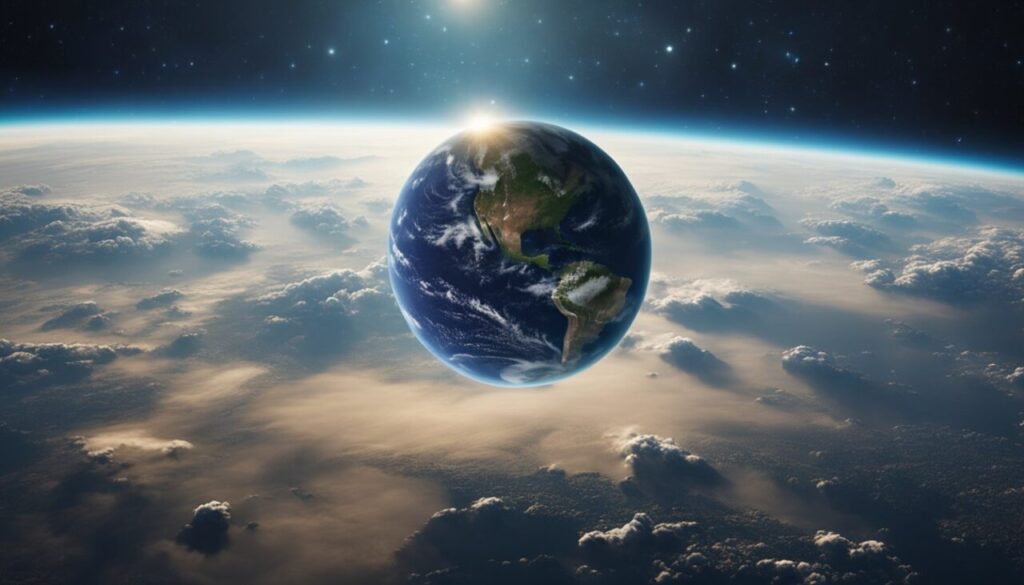
Gravitational Changes
Without the Sun’s gravitational pull, Earth would no longer be held in its orbit and would drift off into space. The Moon would also be affected and would eventually break free from Earth’s orbit. The gravitational pull of other planets in the solar system would also affect Earth’s orbit, causing irregularities in its path.
Orbital Mechanics
The disappearance of the Sun would cause a drastic change in Earth’s orbital speed and direction. The planet would continue to move in a straight line, but without the Sun’s gravitational force, it would no longer be curved into an orbit. This would cause Earth to move away from the Sun and into the cold, dark reaches of space.
Darkness and Temperature Drop
With the Sun gone, Earth would be plunged into darkness. The only light would come from the stars and other celestial objects in the sky. The temperature would also drop rapidly, as the Sun’s heat would no longer be present to warm the planet. This would cause a global freeze, with temperatures dropping to well below freezing within a matter of days.
Interesting fact: Earth's average orbital speed is about 67,000 miles per hour.
Short-Term Survival Challenges
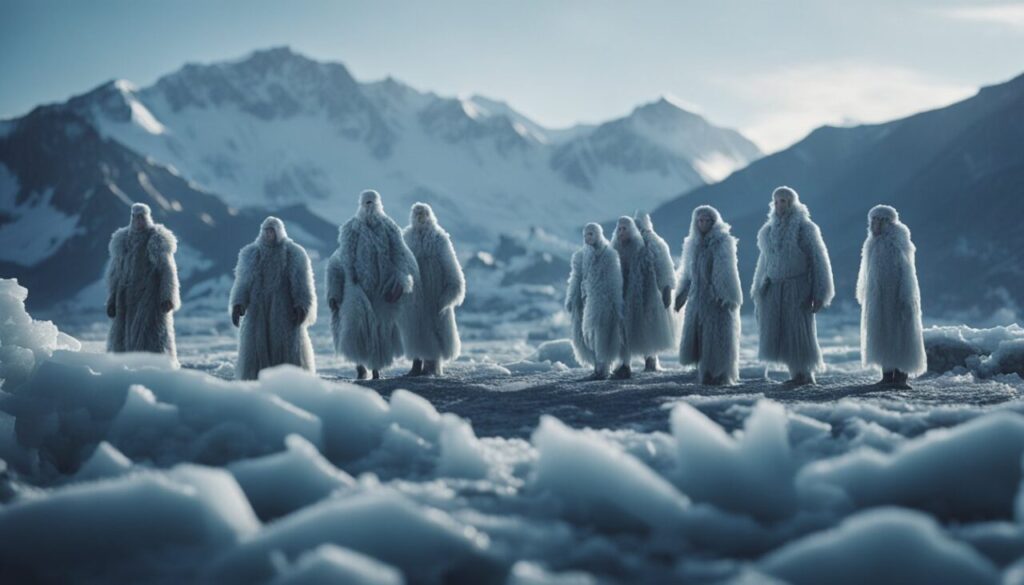
Photosynthesis Cessation
Plants rely on the sun’s energy to carry out photosynthesis, which is the process of turning carbon dioxide and water into glucose and oxygen. Without the sun, photosynthesis would immediately cease, causing plants to die off rapidly. This would have a significant impact on the food chain, as herbivores would lose their primary source of food.
Food Chain Disruption
The loss of plants would have a ripple effect throughout the food chain. Herbivores would quickly die off due to lack of food, which would in turn cause carnivores to starve. The entire ecosystem would be thrown off balance, and it’s likely that many species would go extinct as a result.
Climate and Weather Alteration
The sun plays a crucial role in regulating the Earth’s climate and weather patterns. Without the sun’s energy, the Earth would quickly become a frozen wasteland. The lack of sunlight would also cause the Earth’s atmosphere to cool and contract, leading to changes in atmospheric pressure and wind patterns.
Interesting fact: The ocean's food chain would also be impacted, as phytoplankton rely on the sun's energy to carry out photosynthesis.
Long-Term Planetary Changes
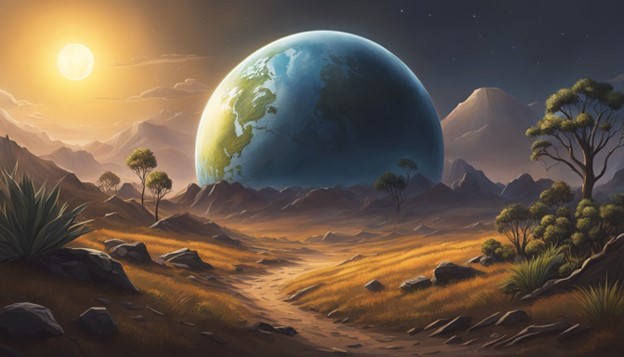
Atmospheric Transformations
Without the Sun, the Earth’s atmosphere would undergo a huge transformation. As mentioned, the temperature would drop rapidly, causing the air to contract and become denser. This would result in a decrease in atmospheric pressure, causing gases to condense and freeze. The Earth’s atmosphere would eventually become a thin layer of frozen gas.
Oceanic Consequences
The oceans play a crucial role in regulating the Earth’s temperature, and without the Sun, the oceans would quickly freeze over. The ice would then reflect any tiny amount of light back into space, causing the Earth’s temperature to drop even further. The frozen oceans would also cause a drop in sea levels, exposing new land masses.
Geological Implications
The lack of heat from the Sun would cause the Earth’s crust to cool rapidly, resulting in a decrease in volcanic and tectonic activity. Over time, the Earth’s surface would become more stable, and the rate of erosion would slow down.
Interesting fact: The temperature on the dark side of the moon can drop to -280 degrees Fahrenheit (-173 Celsius), which is close to the temperature that Earth would experience if the Sun disappeared.
Impact on the Solar System

Planetary Orbits
If the Sun were to disappear suddenly, the planets in our solar system would be affected almost immediately. Without the gravitational pull of the Sun, the planets would no longer be held in their current orbits and would start to drift away into space. The inner planets, including Earth, would be affected the most and would likely be thrown out of the solar system entirely.
Asteroid Belt and Comets
The asteroid belt and comets in our solar system would also be affected by the disappearance of the Sun. Without the gravitational pull of the Sun, the asteroid belt would likely break apart and the comets would be thrown out of the solar system or collide with other objects.
Cosmic Perspective
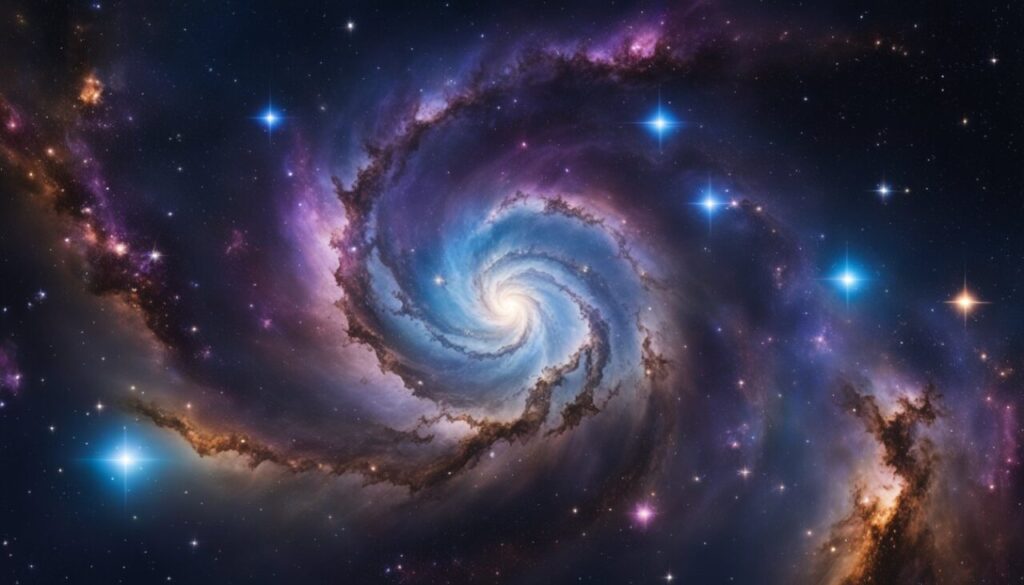
Galactic Orbit
If the Sun were to disappear, the planets in the Solar System would continue to move in their respective orbits. However, the gravitational force that the Sun exerts on these planets would no longer exist, causing them to drift away into space. Eventually, the planets would be pulled towards other stars in the Milky Way galaxy, altering their orbital paths and potentially causing collisions with other celestial bodies.
Interesting fact: If Earth were to be thrown out of the solar system immediately, it would take approximately 42,540 years to reach the nearest star, Proxima Centauri. Of course, this depends on variable velocity, galactic motion, and relativity.
Interstellar Consequences
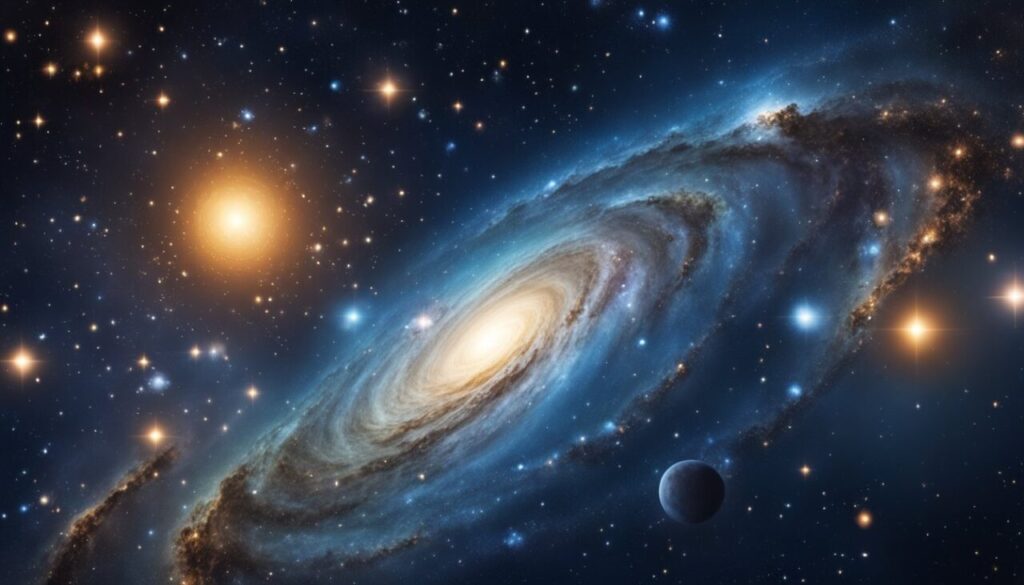
The disappearance of the Sun would have significant consequences on interstellar space. As the Sun no longer emits light and heat, the temperature of the Solar System would drop drastically. This would cause the gases in the Solar System to condense and form solid particles, leading to the formation of a new asteroid belt.
Future of the Solar Remnants
After the Sun’s disappearance, the remnants of the Solar System would continue to exist in space. The planets, asteroids, and comets would continue to orbit the center of the Milky Way galaxy. Over time, the planets and other celestial bodies would cool down and become dark, frozen worlds.
Interesting fact: The asteroid belt between Mars and Jupiter is believed to be a remnant of the early Solar System.
Conclusion
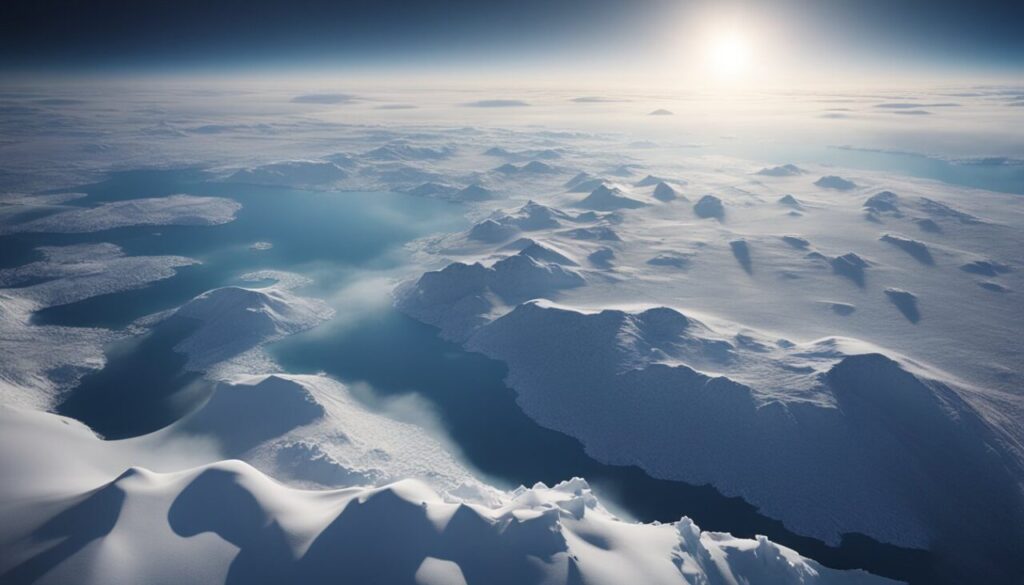
In conclusion, if the Sun were to suddenly disappear, Earth would face a horrible situation. Temperatures would drop rapidly, darkness would enclose everything, making survival impossible for everyone except humans and some microorganisms.
Plants would die very soon and many animals too.
Some bigger trees would stay alive for some time but they would also eventually die off.
In such a scenario, humanity’s best chance for survival would lie in advanced technology and careful preparation.
Bunkers equipped with renewable energy sources and sustainable life support systems would offer refuge from the harsh conditions on the surface.
However, even in the relative safety of these shelters, long-term survival would remain impossible.
Additionally, the disappearance of the Sun would not only impact our immediate surroundings but also have huge consequences for the wider universe.
The loss of our star would alter the dynamics of the galaxy, reshaping the cosmic landscape in ways we can barely imagine.
Ultimately, the disappearance of the Sun would of course lead to the disappearance of the solar system and all planets would eventually start to drift off into space.
Possibly some planets from the previous solar system would find a new home in some distant star in the same galaxy.
But the chances for that are very low. Very very low. Around 0.0001%.




















